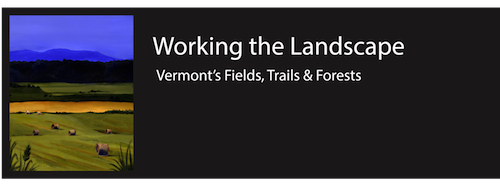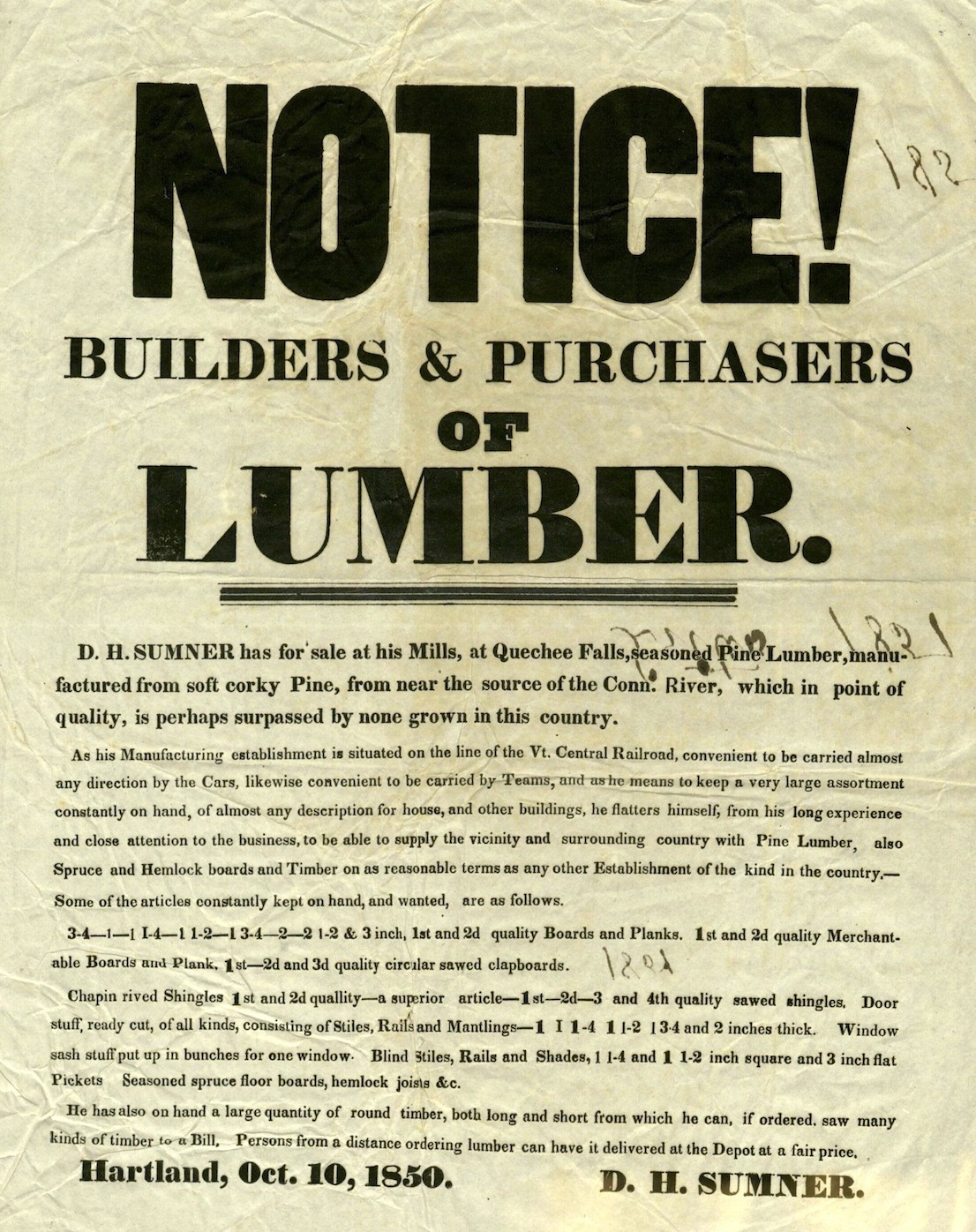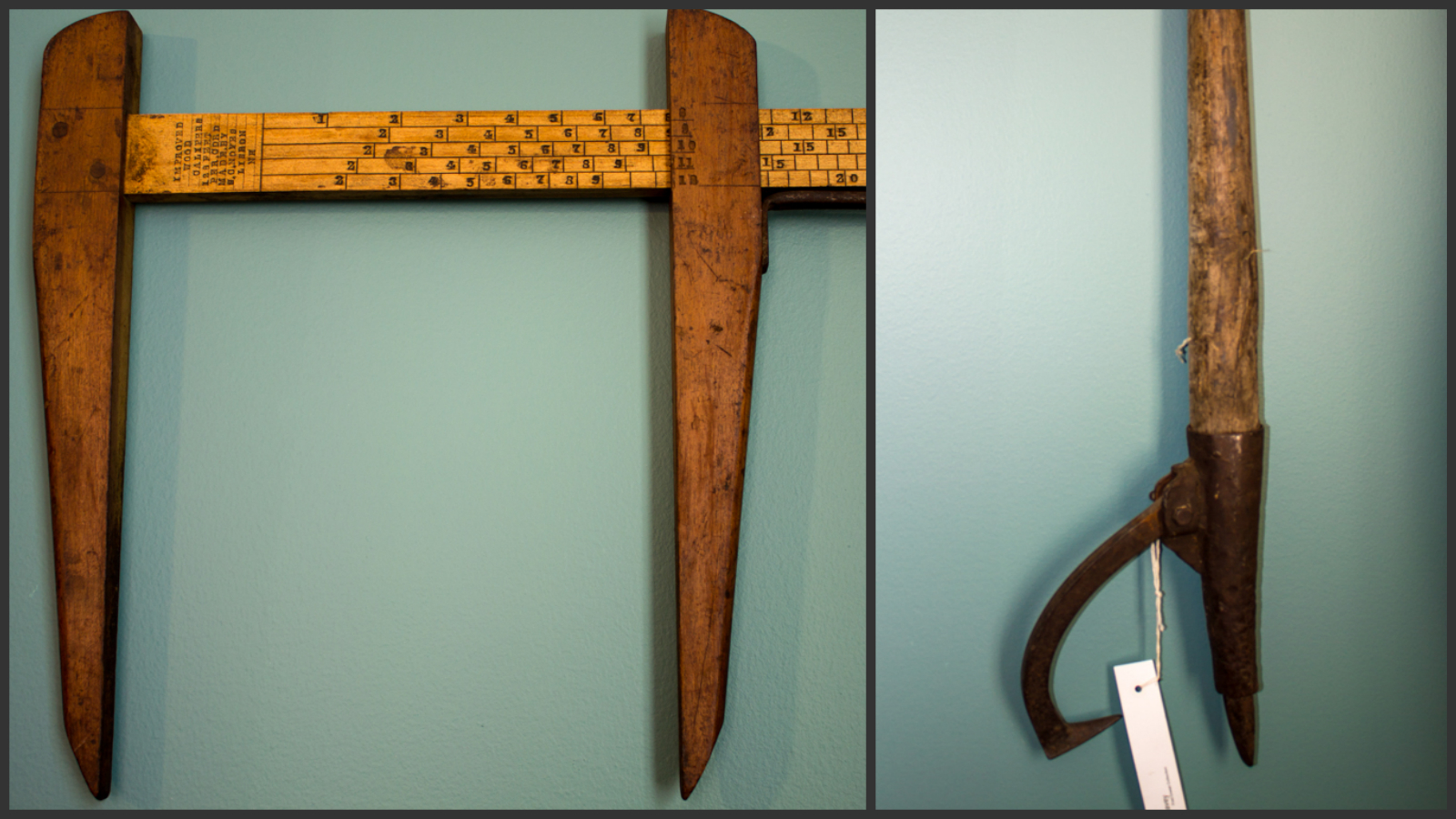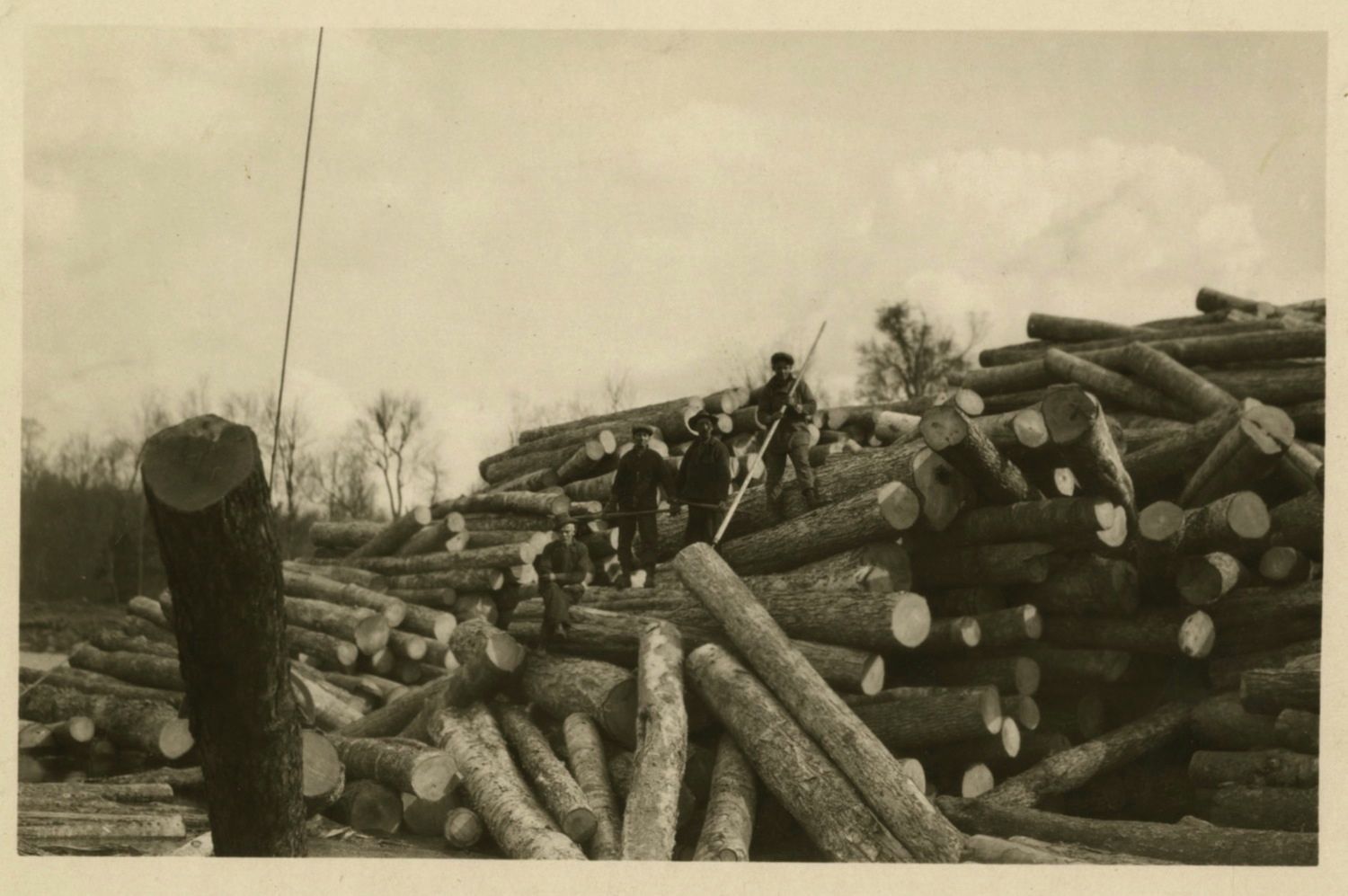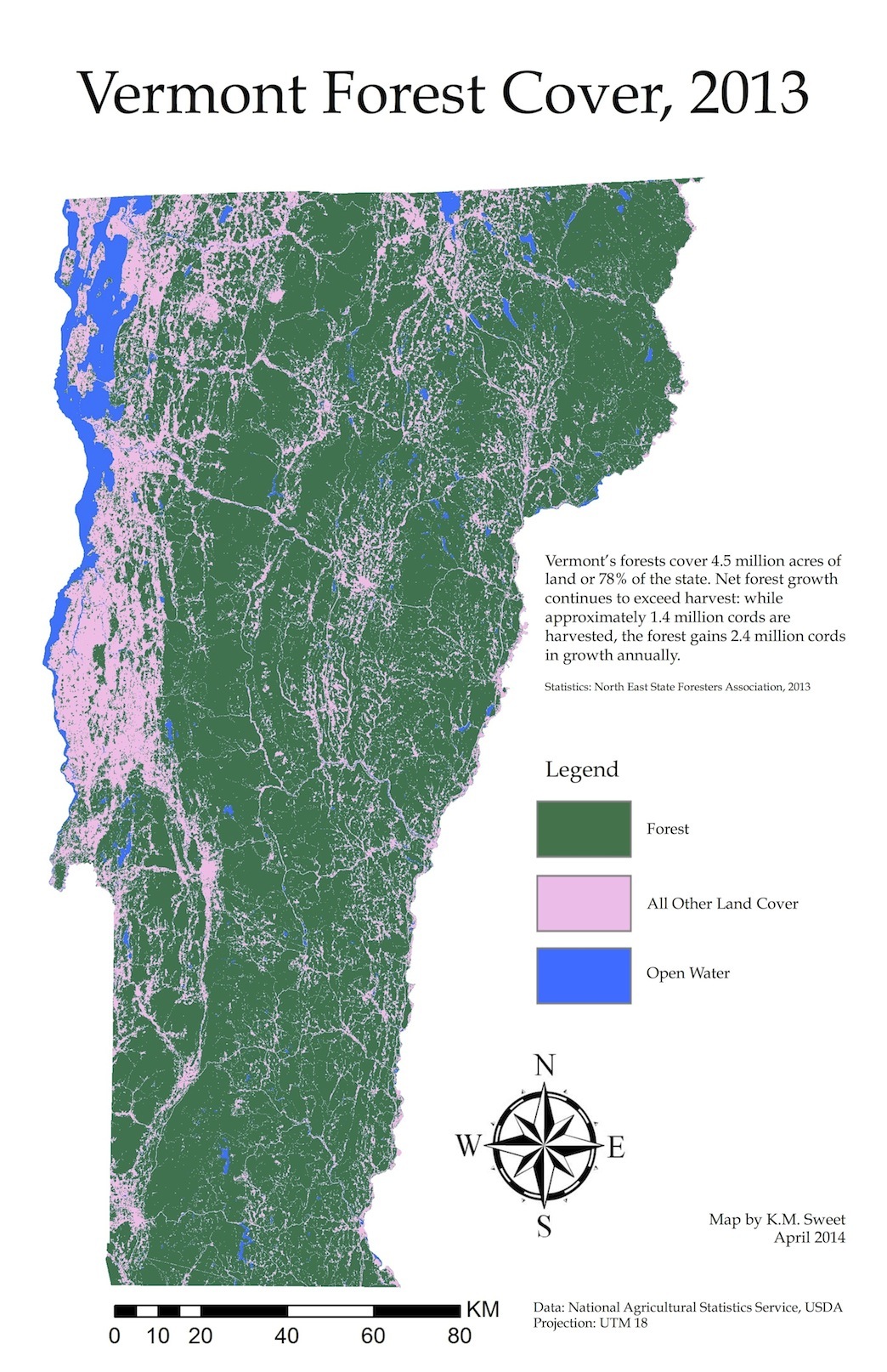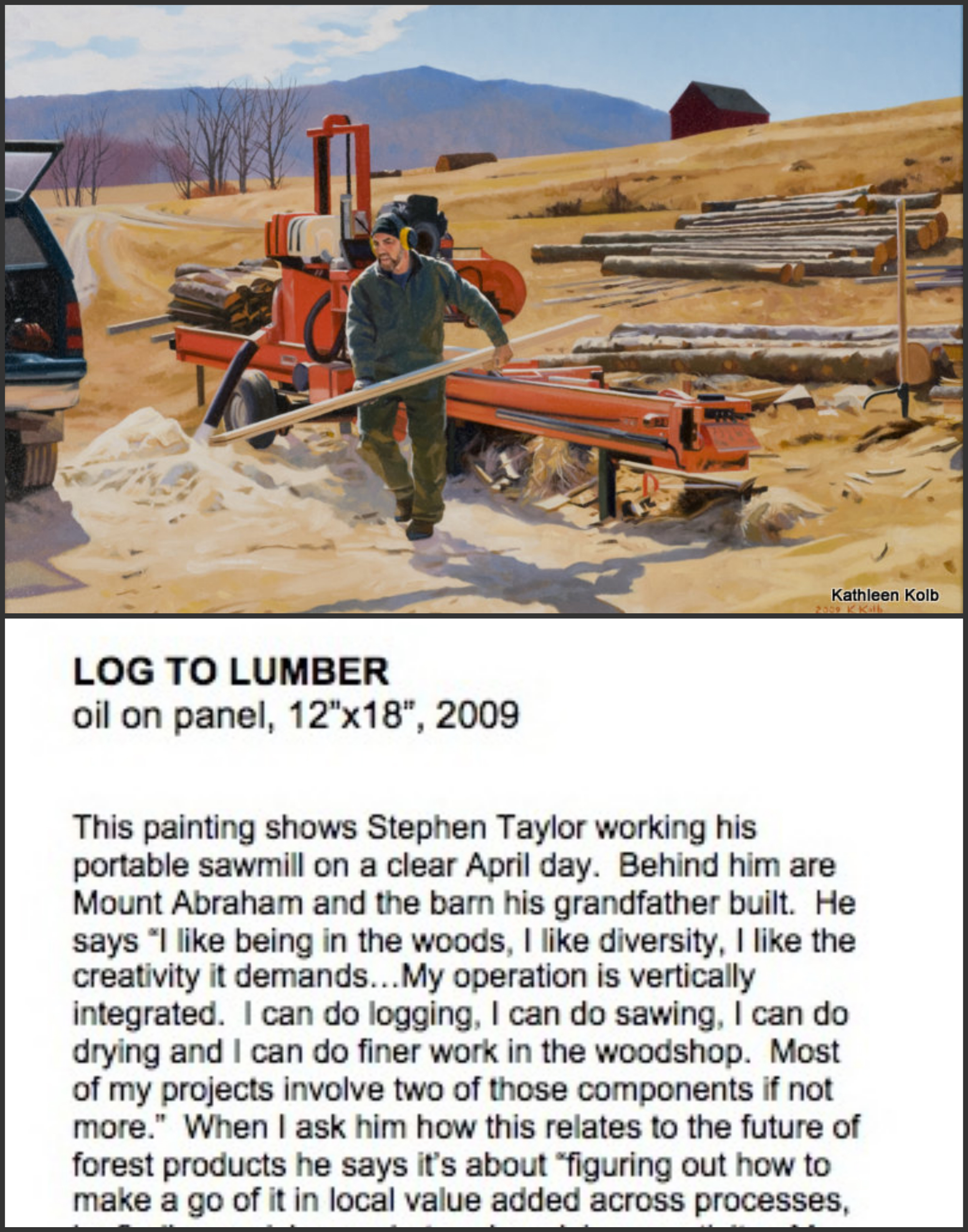Forests
Forests are the dominant land cover in Vermont—but less than 200 years ago, the state was largely deforested. The logging industry boomed in the 19th century, leading to widespread clearcutting. Today logging is a key component of sustainable forest management and contributes to the health and vitality of the state’s forest land and its forest-based industries, including lumber, wood products, and maple syrup.
An Advertisement for Lumber in 1850
By the mid-19th century, the logging boom in Vermont was at its peak. The Connecticut River Valley was an important source of high-quality lumber to be transported along the river to regional markets.
To view this notice in greater detail, click the image, then click the image thumbnails on the following page.
19th Century Logging Tools: Log Rule & Peavey
A log rule estimates how much lumber, in board feet, can be sawn from the log. A board foot is a 12-inch by 12-inch plank of wood 1-inch thick. While different log rules vary in how they estimate this total, they each work by measuring the length of the log and its average diameter.
Invented in 1857 by Maine blacksmith Joseph Peavey, this antique tool was used for handling, turning and moving logs. It improved upon an earlier tool, known as a cant hook or cant dog, by adding a sharp metal spike to the end of the wooden lever. More than 150 years later, the Peavey Manufacturing Company in Eddington, Maine continues to produce peaveys, cant hooks, and a variety of other logging tools.
Logs & Labor
The Emporium Lumber Company purchased land in Bennington and Rutland counties in 1906 and operated in Vermont until 1916. The loggers here pose with their tools (likely peaveys or cant hooks), standing on felled logs—a brief moment of respite in a long day of labor.
To view this photograph in greater detail, click the image, then click the image thumbnail on the following page.
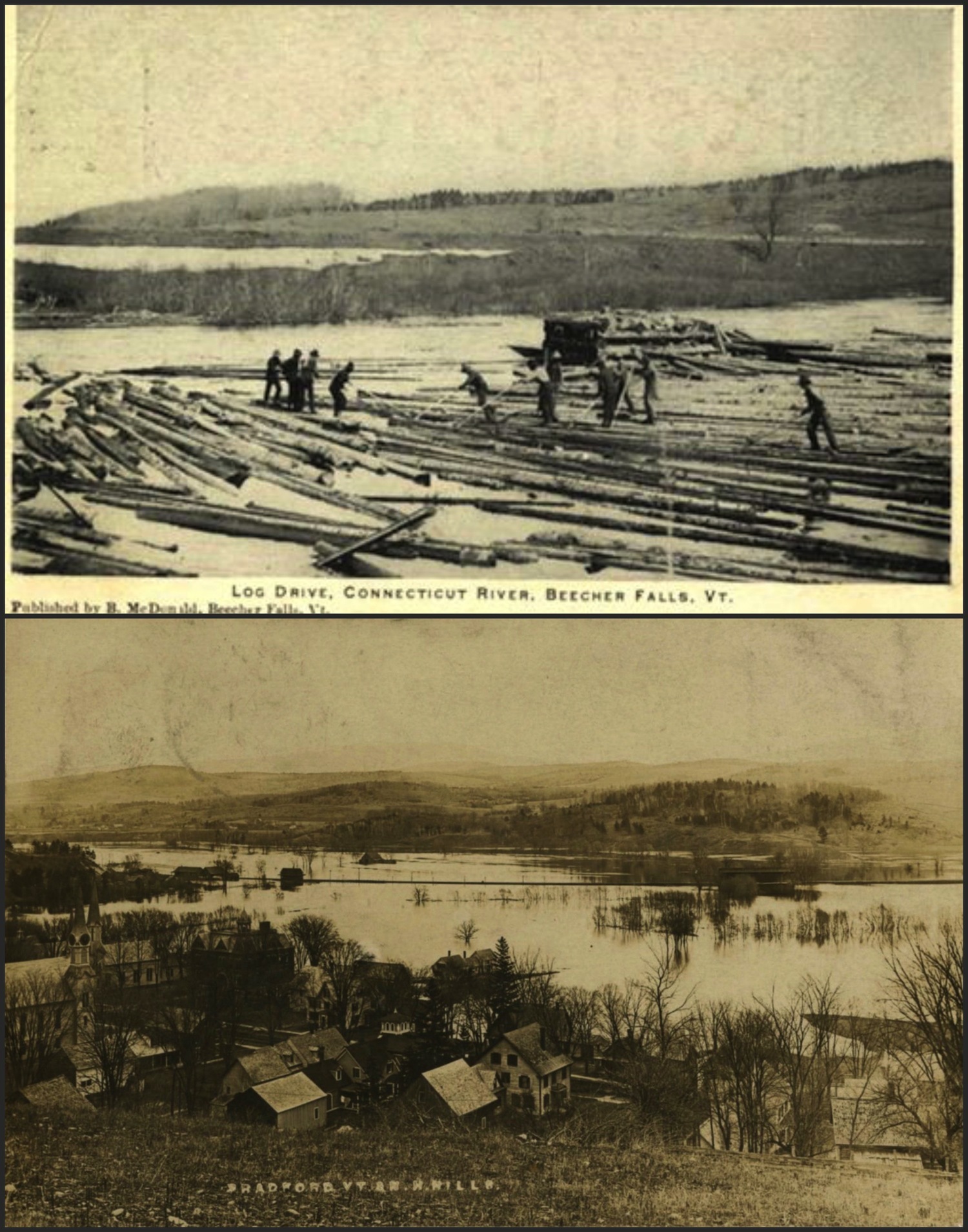
Log Drive, Connecticut River, Beecher Falls, Vt., c. 1907. Bradford, VT, c. 1909. UVM Special Collections.
Postcards from Vermont's Connecticut River Valley: Canaan & Bradford
The Connecticut River was the site of numerous log drives in 19th-century Vermont. The men who worked these drives had difficult jobs, working from dawn to dusk, balancing on moving logs in cold, wet conditions. Their work required alertness, sure-footedness, strength and agility as they rode the logs to regional markets.
In 1870, at its highest point of deforestation, the Vermont landscape was roughly 70% percent cleared and only 30% forested. Logging had transformed many of Vermont’s green mountains into bare hillsides by the turn of the 20th century. These postcards depict the deforested landscape along the banks of the Connecticut River.

Double-bitted Axe, c. 1900. Collection of Canaan Historical Society. Chainsaw, c. 2000. Donated by Chimney Savers, Inc., Randolph, VT.
Tools From the Turn of Two Centuries: Double-bitted Axe & Chainsaw
Axes, both single and double-bitted, were used by loggers into the late 19th century to fell trees. The Rixford Manufacturing Company, founded in 1837, manufactured axes in Vermont and Quebec from 1880 until its closure in the mid-1950s. The company’s records are housed in UVM’s Special Collections.
The gasoline-powered chainsaw, invented in the late 1920s, largely replaced the use of crosscut hand saws in the logging and wood products industries. Chainsaws are also commonly used by homeowners to trim, cut down and process trees for noncommercial purposes, such as firewood, landscaping and aesthetics.
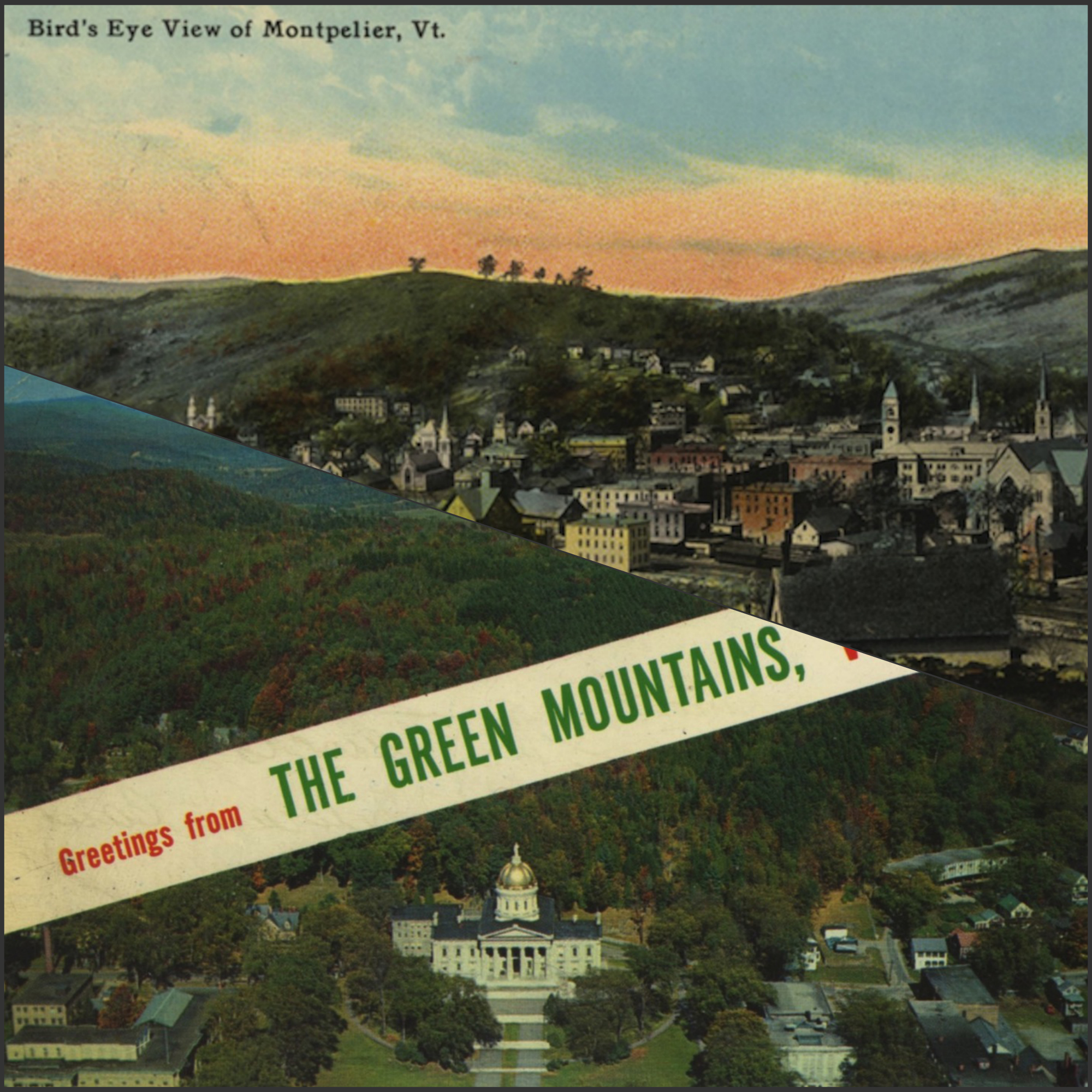
Bird’s Eye View of Montpelier, Vt, c. 1913. Greetings from the Green Mountains, Vermont, c. 1966. UVM Special Collections.
